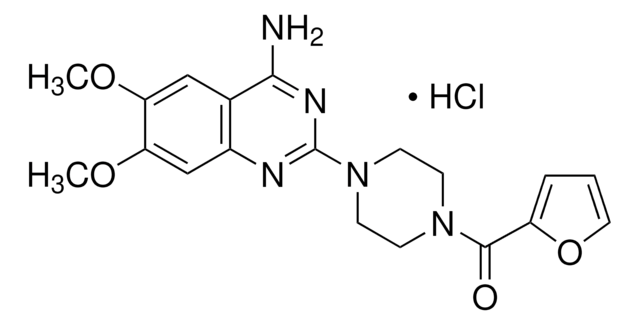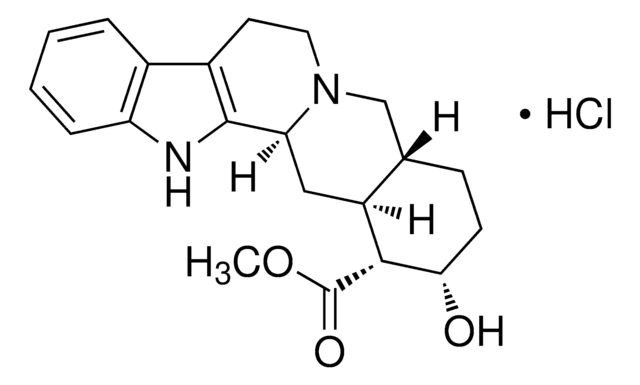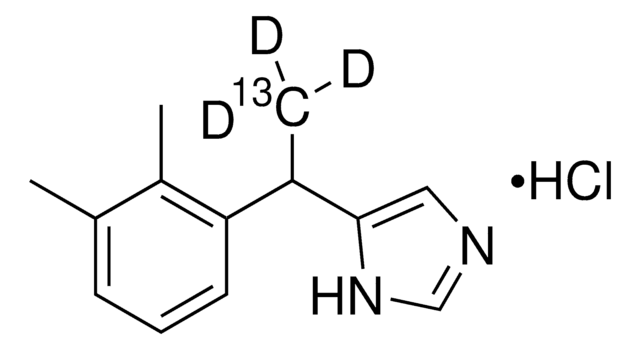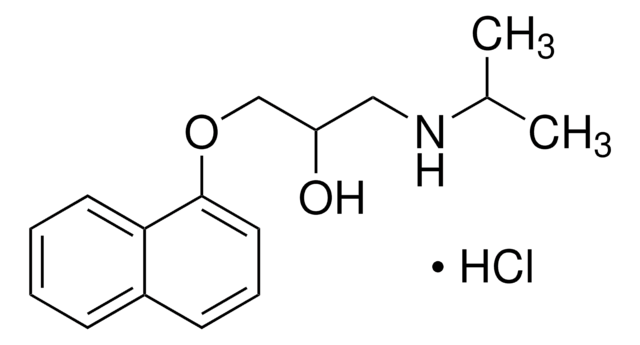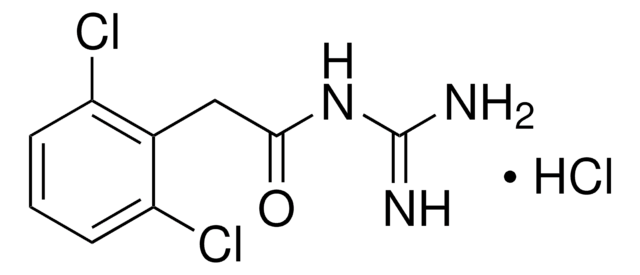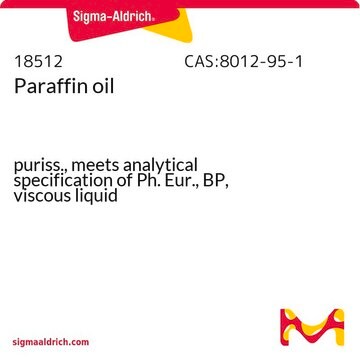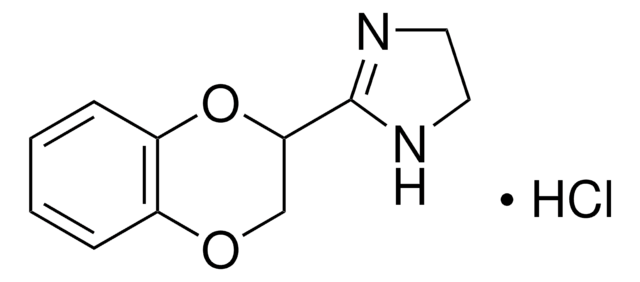A9611
Atipamezole
≥98% (HPLC)
Sinônimo(s):
4-(2-Ethyl-2,3-dihydro-1H-inden-2-yl)-1H-Imidazole, Antisedan, MPV 1248
About This Item
Produtos recomendados
Ensaio
≥98% (HPLC)
forma
powder
cor
white to brown
solubilidade
DMSO: ≥30 mg/mL
temperatura de armazenamento
room temp
cadeia de caracteres SMILES
CCC1(Cc2ccccc2C1)c3c[nH]cn3
InChI
1S/C14H16N2/c1-2-14(13-9-15-10-16-13)7-11-5-3-4-6-12(11)8-14/h3-6,9-10H,2,7-8H2,1H3,(H,15,16)
chave InChI
HSWPZIDYAHLZDD-UHFFFAOYSA-N
Descrição geral
Aplicação
Ações bioquímicas/fisiológicas
Características e benefícios
Código de classe de armazenamento
11 - Combustible Solids
Classe de risco de água (WGK)
WGK 3
Ponto de fulgor (°F)
Not applicable
Ponto de fulgor (°C)
Not applicable
Certificados de análise (COA)
Busque Certificados de análise (COA) digitando o Número do Lote do produto. Os números de lote e remessa podem ser encontrados no rótulo de um produto após a palavra “Lot” ou “Batch”.
Já possui este produto?
Encontre a documentação dos produtos que você adquiriu recentemente na biblioteca de documentos.
Artigos
α2-Adrenoceptors
Conteúdo relacionado
DISCOVER Bioactive Small Molecules for Neuroscience
Nossa equipe de cientistas tem experiência em todas as áreas de pesquisa, incluindo Life Sciences, ciência de materiais, síntese química, cromatografia, química analítica e muitas outras.
Entre em contato com a assistência técnica
